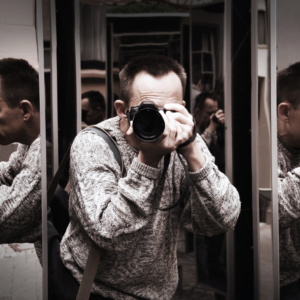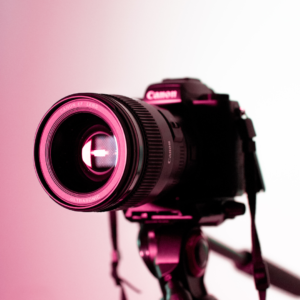Exploring different photography styles offers a path to elevate one’s skills and discover personal creativity. To effectively test various styles, photographers should first experiment with distinct techniques, such as portrait, landscape, and street photography, to find what resonates most with their vision. Each style presents unique challenges and opportunities, enabling photographers to grow and refine their artistic voice.
Engaging with different genres also encourages learning through practice. Utilizing online resources, joining workshops, or participating in photography challenges can provide valuable insights and inspiration. By actively seeking feedback and analyzing results, photographers can better understand the nuances of each style they explore.
Ultimately, testing various photography styles not only enhances technical skills but also fosters a deeper appreciation for the art. Embracing this journey can reveal hidden talents and strengthen a photographer’s portfolio, paving the way for future projects and artistic endeavors.
Understanding Photography Styles
Exploring photography styles involves defining personal preferences, investigating various genres, and acknowledging the historical shifts that shape these styles. Each aspect contributes to a photographer’s unique vision and approach.
Defining Your Personal Style
Developing a personal photography style is a journey of self-discovery. It starts by identifying influences, preferences, and desires. Photographers should analyze their favorite works, noting recurring themes or techniques they admire.
Creating a mood board can help visualize these preferences. This board may include colors, subjects, and compositions that resonate. Photographers benefit from experimenting with different settings and techniques to see what aligns with their vision.
Engaging in consistent practice is essential for growth. Photographers can explore various subjects, such as landscapes, portraits, or street photography, to refine their styles over time.
Exploring Genre-Specific Styles
Photography encompasses various genres, each with distinct styles and techniques. Some popular genres include:
- Portrait: Focuses on capturing the essence of individuals or groups.
- Landscape: Highlights natural environments, often showcasing dramatic lighting and composition.
- Street: Documents candid moments in public spaces, emphasizing spontaneity.
Photographers should study these genres to identify areas of interest. They can explore the work of established photographers within these genres, analyzing techniques and approaches.
Attending workshops or joining photography clubs can provide insights into genre-specific styles. Engaging with peers allows photographers to receive feedback and broaden their perspectives.
Historical Evolution of Photographic Styles
Photography styles have evolved significantly since the invention of the camera. Early photography was characterized by formal portraiture and staged scenes. With the advent of new technologies and techniques, styles like realism and impressionism emerged.
The mid-20th century saw a shift toward documentary and street photography, reflecting social and cultural changes. Today, digital photography has revolutionized styles, enabling unique expressions through editing and manipulation.
Photographers should familiarize themselves with these shifts, as understanding historical context can inform their work. Awareness of the evolution of styles can foster creativity and inspire innovative approaches in contemporary photography.
Technical Essentials in Photography
A solid grasp of camera settings, lighting techniques, and post-processing fundamentals is crucial for photographers aiming to enhance their craft. These technical essentials serve as the backbone for executing various photography styles effectively.
Mastering Camera Settings
Understanding camera settings is vital for photographers. The main settings to focus on are aperture, shutter speed, and ISO.
- Aperture controls depth of field. A lower f-number (e.g., f/1.8) creates a shallow depth, blurring the background, while a higher f-number (e.g., f/16) increases depth.
- Shutter Speed determines how long the camera’s sensor is exposed to light. Faster speeds (e.g., 1/1000s) freeze motion, while slower speeds (e.g., 1s) create motion blur.
- ISO affects the camera’s sensitivity to light. A lower ISO (e.g., 100) is ideal for bright conditions, whereas a higher ISO (e.g., 3200) is beneficial in low-light situations, albeit with increased noise.
Lighting Techniques
Lighting is one of the most critical elements in photography. Various techniques can be applied depending on the desired effect.
- Natural Light is soft and flattering, making it ideal for portraits and landscapes. Shooting during the golden hour can yield warm tones.
- Artificial Light includes flash and studio lights. Using diffusers softens harsh shadows, while reflectors can enhance lighting and fill shadows.
- Experimenting with different light sources also contributes to style. Side lighting can create drama, while backlighting can create silhouettes.
Post-Processing Fundamentals
Post-processing transforms images from good to great. Familiarity with editing software is essential for photographers.
- Basic Adjustments include cropping, straightening, and adjusting exposure. These modifications enhance composition and correct for misalignment.
- Color Correction can improve the vibrancy of images. Adjusting white balance helps in achieving accurate color representation.
- Advanced Techniques such as layering and masking allow for more creative control. Photographers can combine multiple images or modify specific areas of a photo for unique effects.
Testing and Experimenting
Testing different photography styles requires a structured approach. By crafting specific test projects and thoroughly analyzing the results, photographers can gain valuable insights into their work and refine their techniques.
Crafting a Test Project
Creating a test project involves defining clear objectives. Photographers should choose a specific style, such as portrait, landscape, or street photography.
Steps to develop a test project:
- Select the Style: Choose the photography style to focus on.
- Set Goals: Define what to achieve, such as mastering lighting or composition.
- Plan the Shoot: Map out locations, subjects, and equipment needed.
By setting up a controlled environment, such as a studio or a specific outdoor location, the photographer can focus on the nuances of the chosen style. Having a consistent theme or subject can also aid in better comparison of results.
Analyzing and Critiquing Your Work
After completing the test project, careful analysis is crucial for improvement. Photographers should review their images critically.
Key evaluation methods include:
- Self-Critique: Assess the strengths and weaknesses of each image.
- Seek Feedback: Share work with peers for constructive criticism.
- Compare Styles: Look at how different approaches impact the final output.
Photographers should focus on aspects like composition, lighting, and emotional impact. Keeping a journal of these reflections can help track progress and identify areas for further exploration.
Showcasing Your Work
Demonstrating photography skills effectively is vital for gaining recognition and attracting clients. Two key strategies involve creating a compelling portfolio and establishing a robust online presence.
Creating a Portfolio
A well-structured portfolio is essential for showcasing different photography styles. It should include a diverse range of work that highlights versatility.
Key elements of a portfolio:
- Selectivity: Choose the best images that represent distinct styles.
- Organization: Group images by genre or theme to ensure coherence.
- Presentation: Use high-quality printing for physical portfolios and ensure digital formats are optimized for viewing.
Incorporating personal projects can reflect creativity and passion. Regularly updating the portfolio keeps it relevant and engages viewers.
Social Media and Online Presence
Social media platforms are powerful tools for photographers. They offer opportunities for broader exposure and audience engagement.
Important strategies include:
- Consistent Posting: Regular updates keep followers engaged. Posts should feature new work, behind-the-scenes content, or photography tips.
- Platform Selection: Use platforms like Instagram and Pinterest, which are visually oriented and cater to photographers.
- Engagement: Interact with followers through comments and direct messages to foster a sense of community.
Creating a personal website for a cohesive online representation is beneficial. It provides a dedicated space for galleries, contact information, and client testimonials.





